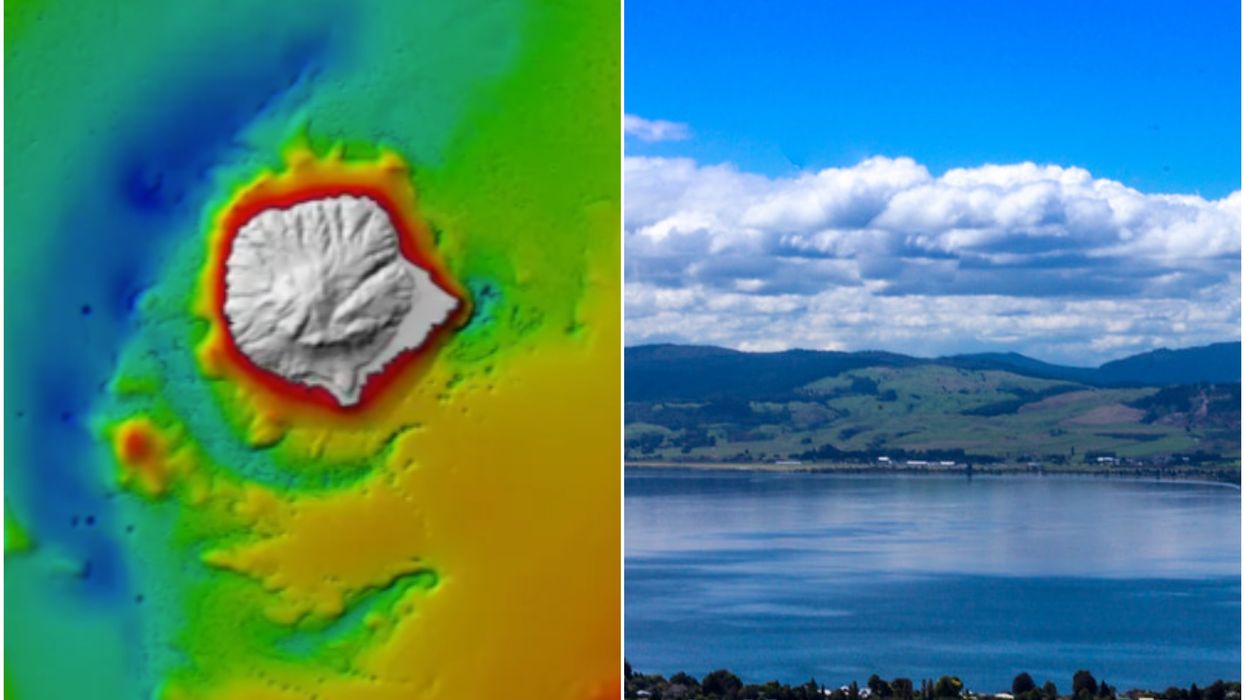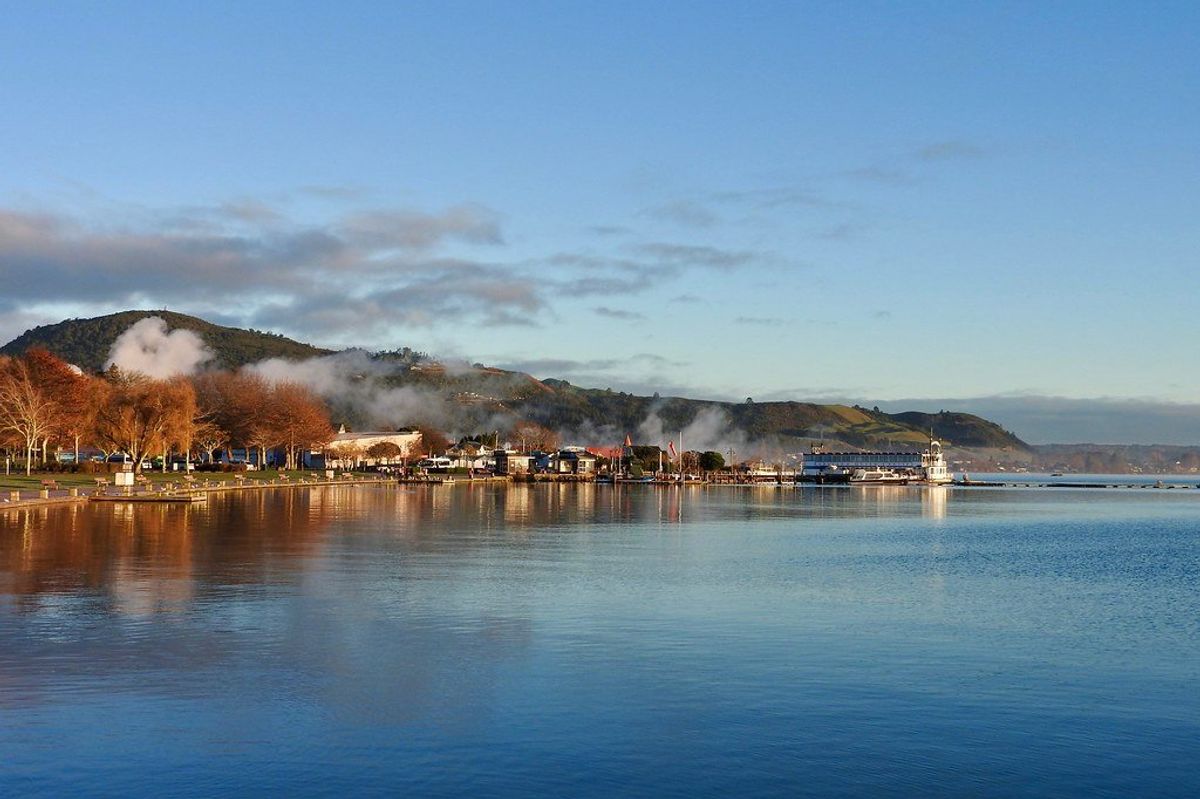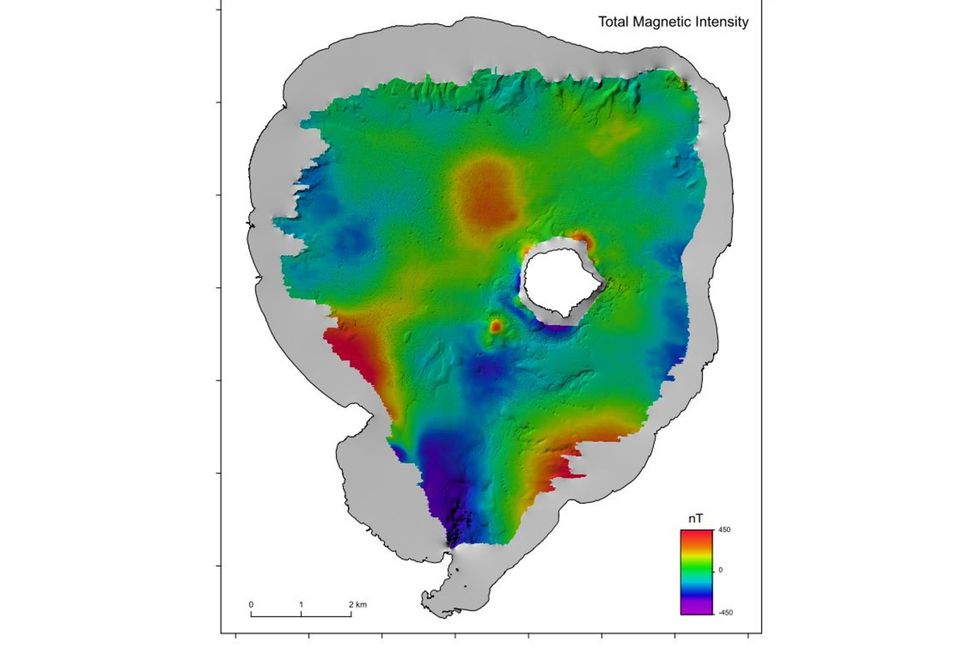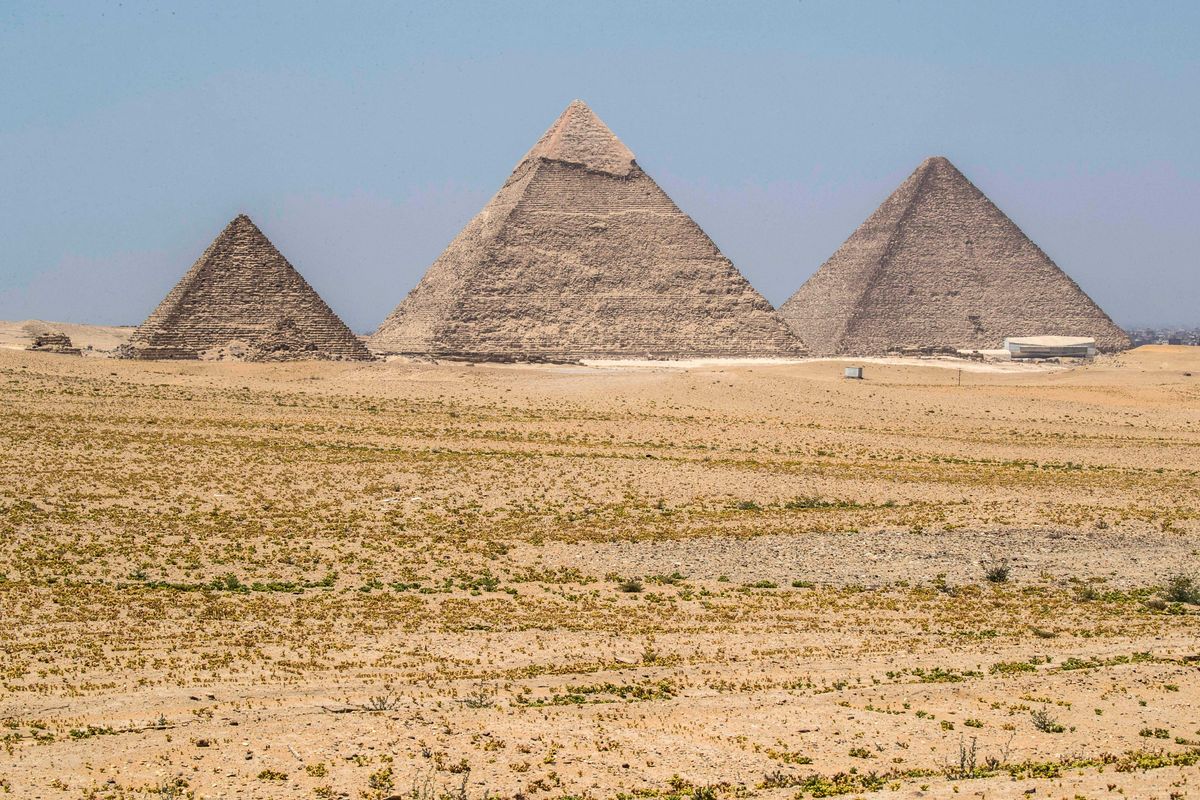Harriet Brewis
Feb 09, 2024

(Left) a map showing the floor of Lake Rotorua and (right) the legendary lake itself
(Institute of Geological and Nuclear Sciences Limited/Umedha Hettigoda)
Scientists have made a major new discovery deep beneath a legendary lake in New Zealand.
Lake Rotorua had already earned itself a place in the country’s heart as the setting of an ancient Māori love story, but now it’s emerged as a site of even greater geological importance than previously thought.
The lake, which sits at the centre of a massive crater on New Zealand’s North Island, has long been hailed for its mysterious, ethereal qualities thanks to the geothermal activity that rumbles below and around it.
It was formed following a massive volcanic eruption some 200,000 years ago, when a magma chamber collapsed to create a 16km-wide circular caldera, which filled with water.
Despite the millennia that have since passed, the lake’s water still has a high sulphur content, and clouds of steam continue to drift around its shore, resulting in a “magical green-blue colouration” according to the Tourism New Zealand website.
But now it has emerged that there’s even more going on way beneath the waves.

Experts at the country’s GNS Science research institute have mapped Rotorua's floor in never-before-seen detail, revealing an ancient river and a large magnetic anomaly, among other key features.
These new maps prove for the first time that the lake’s hydrothermal systems extend into its hidden depths, as Live Science notes.
Cornel de Ronde, a principal scientist at GNS Science, told the website that seeing the maps was like wearing glasses for the first time when you didn't realise you needed them.
"You finally put those glasses on, and you can see the fine print," he gushed.
The maps cover 55 square kilometres (21 square miles), which is around 68 per cent of the lake's floor, according to a statement released by GNS Science.
Some of the data was collected by The Royal New Zealand Navy, which used a multibeam echo sounder — a type of sonar – to study the lake floor.
They also carried out magnetic surveys, which revealed the anomaly.
"Normally with volcanic rocks, when you run a magnetometer over the top of them, you get very positive anomalies, but in this case we're getting negative anomalies, likely due to very low magnetic susceptibilities," de Ronde explained.
Volcanic rocks typically contain the highly magnetic mineral magnetite. However, the researchers believe that hydrothermal fluids have passed through the rock in Lake Rotorua, transforming this magnetite into pyrite – also known as fool's gold – which has almost no magnetic signal.
This hydrothermal process would severely diminish the magnetic signal, thus explaining the negative anomaly, as Live Science notes.

De Ronde and his team also found other evidence of hydrothermal activity in the same general area as the anomaly.
A heat flow map showed heat – most probably in the form of hot water – rising to the lake floor from below.
It also unearthed craters which de Ronde said were likely left by hydrothermal eruptions.
And yet, water temperatures near the bottom of the lake typically measure around 14C (57F), according to de Ronde – so not what you’d associate with hydrothermal blasts.
But this is because the lake is so big, its cool waters counteract the heat that rises from below.
"Nobody swimming in the lake would notice it, but with instrumentation, we do," de Ronde said.
And for anyone wondering what that legendary Rotorua love story is all about, we’ve got you covered…
The story takes place on Mokoia Island – a dome formed by slowly oozing lava in the centre of the lake – and is about a beautiful maiden (naturally) called Hinemoa and a warrior called Tutanekai.
Hinemoa, who lived on the eastern shores of Lake Rotorua, was the daughter of an influential chief and was regarded puhi (sacred), which meant that her tribe would choose her husband. Countless suitors sought her hand, but none met the approval of her tribe.
Meanwhile, on Mokoia Island, there lived a family of several brothers, including Tutanekai, who was the youngest.
One day, at a tribal gathering, Tutanekai and Hinemoa spotted one another and instantly fell in love (naturally).
However, Tutanekai was considered too low-born to marry Hinemoa, so their future together seemed doomed.
To cut a long story short, Hinemoa managed to swim across to Mokoia Island where she was reunited with her love.
Surprisingly, Hinemoa’s tribe eventually accepted Tutanekai as her husband, and they all lived happily ever after.
Sign up for our free Indy100 weekly newsletter
Have your say in our news democracy. Click the upvote icon at the top of the page to help raise this article through the indy100 rankings
Top 100
The Conversation (0)













